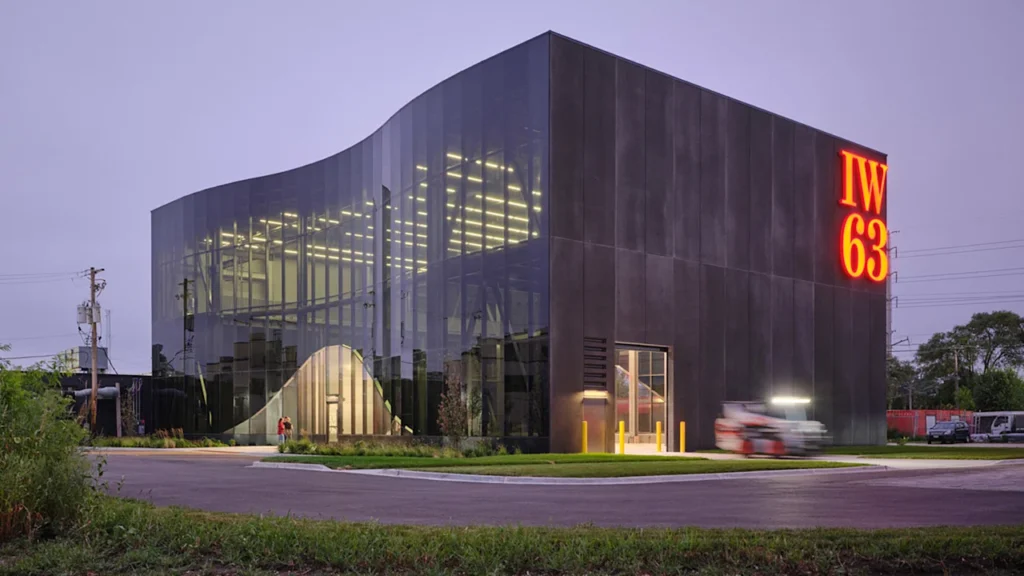
It looks like it could be sitting on the campus of any number of major universities across the country, but this sleek, glass-lined educational building is far from the conventional teaching space: It’s a new training facility for the Ironworkers Local 63 union in Chicago.
The training facility is being used to give young ironworkers hands-on experience welding, climbing, and installing the essential elements that underlie buildings around the world. As anxiety snowballs over just which professions will survive the emergence of artificial intelligence, physical trades like ironwork are seeming more and more AI proof—the building itself a counterargument to the perception that a promising career path necessarily starts at a university.
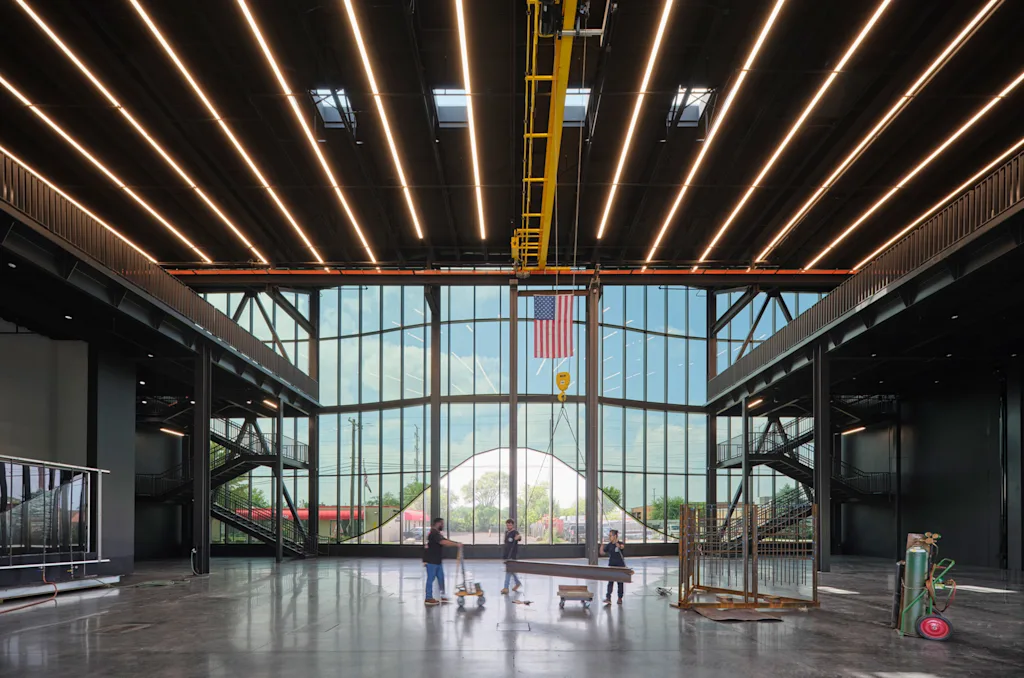
The building was designed by architecture and design firm Gensler and is located in the town of Broadview on the outskirts of Chicago. It’s a school of hopefully no hard knocks, where apprentice ironworkers will learn to move and weld multi-ton pieces of steel inside what is essentially a giant glass jewel box.
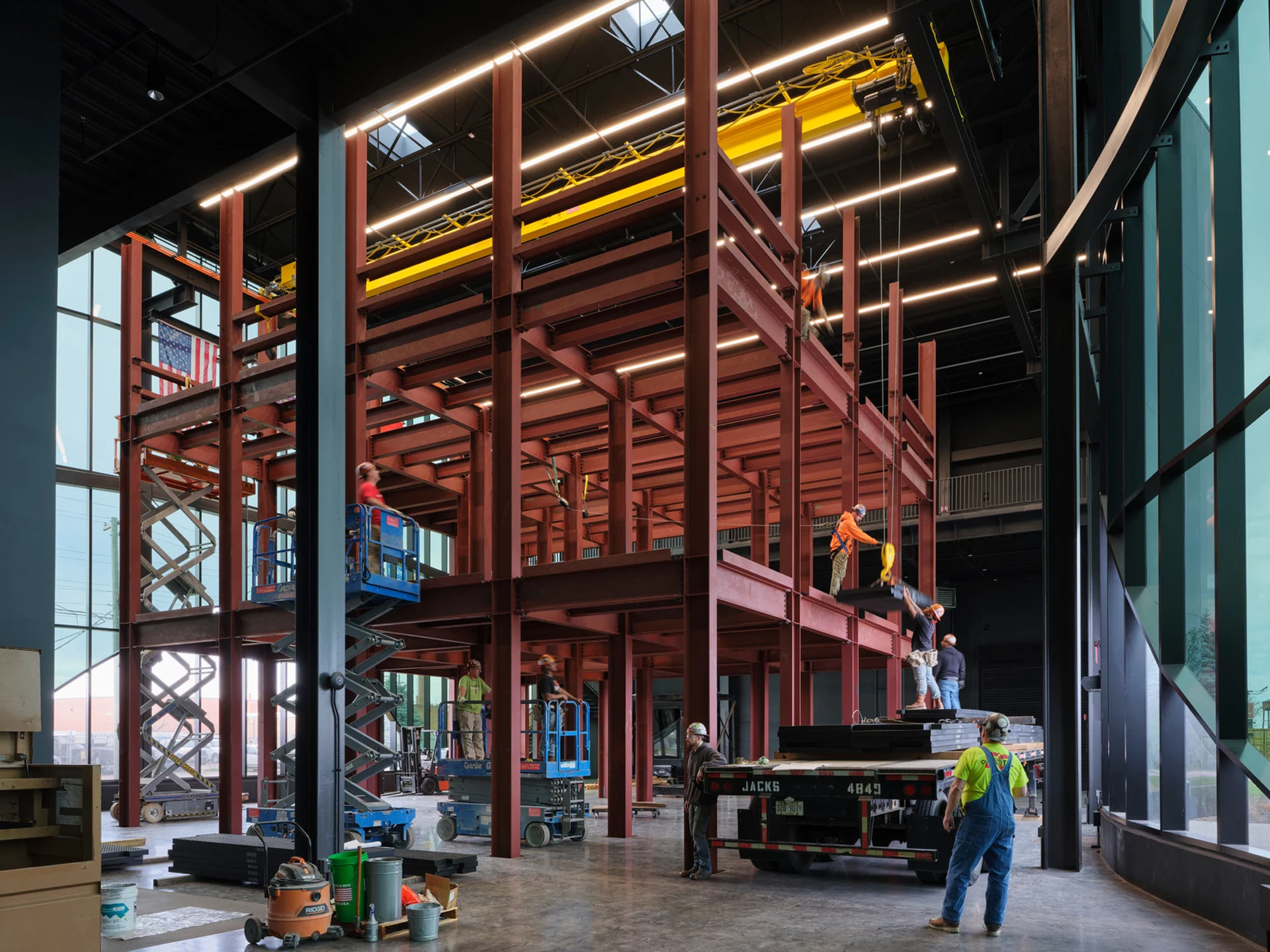
Despite the role’s name, ironwork involves a wide range of construction processes that go far beyond welding massive metal beams. More than half the union’s work in recent years has been installing glass curtain walls—the smooth facades that shimmer on skyscrapers the world over. Paul Wende saw the trendlines. He’s the union’s business manager, financial secretary, and treasurer, and he set out to give the unionworkers a place to refine those skills without having to learn on the job.
“Everything we do has to line up. Everything from the floors to the ceilings tie into the horizontals on the windows. Everything goes off of that glass. So it’s got to be perfect. The architects really go over it with a fine-tooth comb,” he says. “Well, if you’ve got to be perfect, you better train on it.”
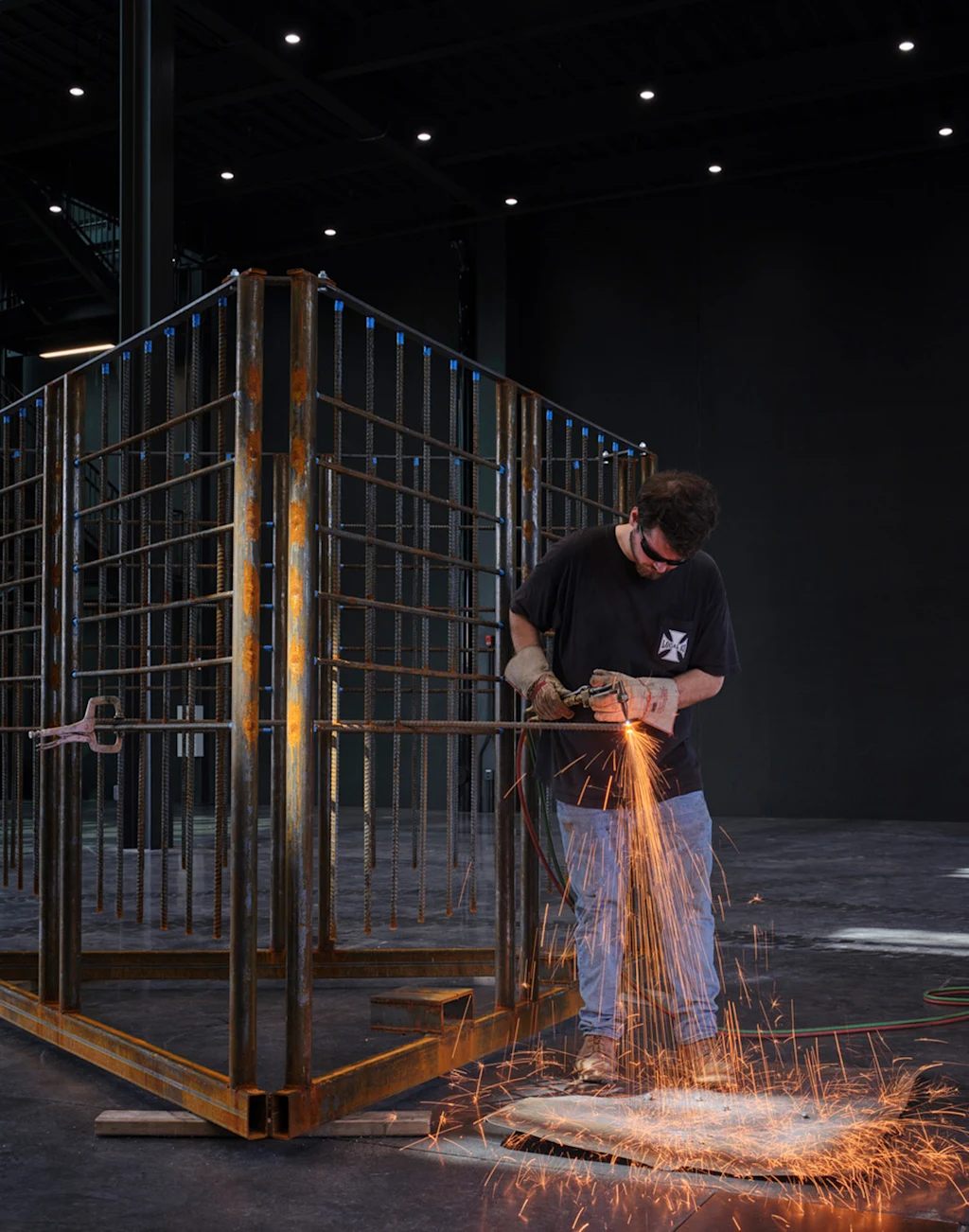
“The West Point of training centers”
Rather than just finding empty space in a workaday warehouse, Wende had a higher vision for the facility. “What I wanted to do was turn that school into the West Point of training centers,” he says.
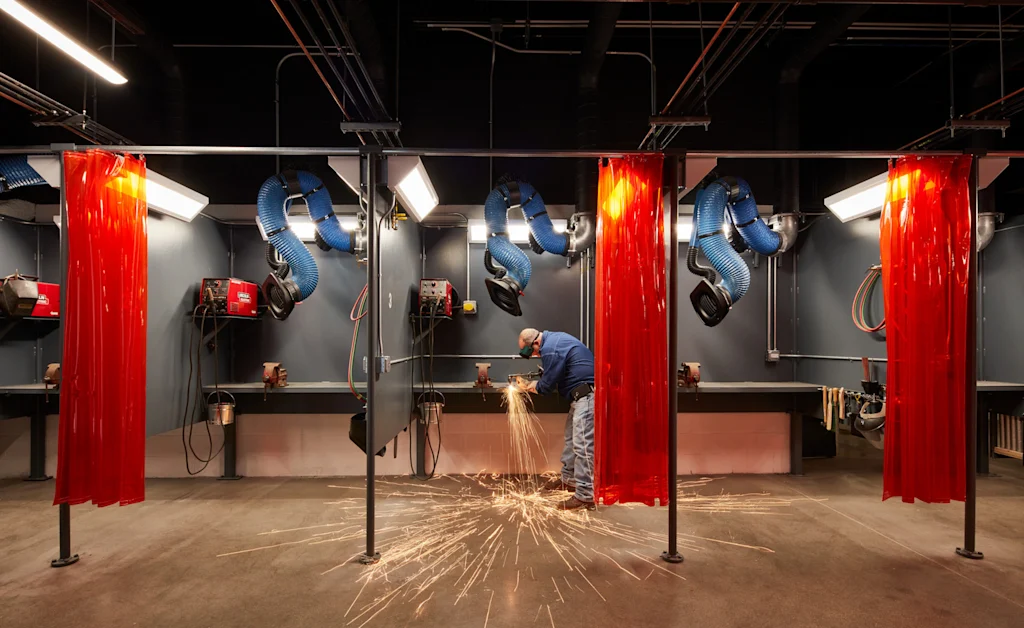
Wende might have had his mind on the upper echelons of the U.S. military, but it was another local trade union that became the true model to follow. In the mid-2010s, the Chicago Plumbers Union opened a state-of-the-art training facility that brought its apprentice workers out of a musty basement and into a clean, well-lit educational building. Gensler also designed that building, and Wende approached the firm’s Chicago office seeking a project suited to his own union’s trade.
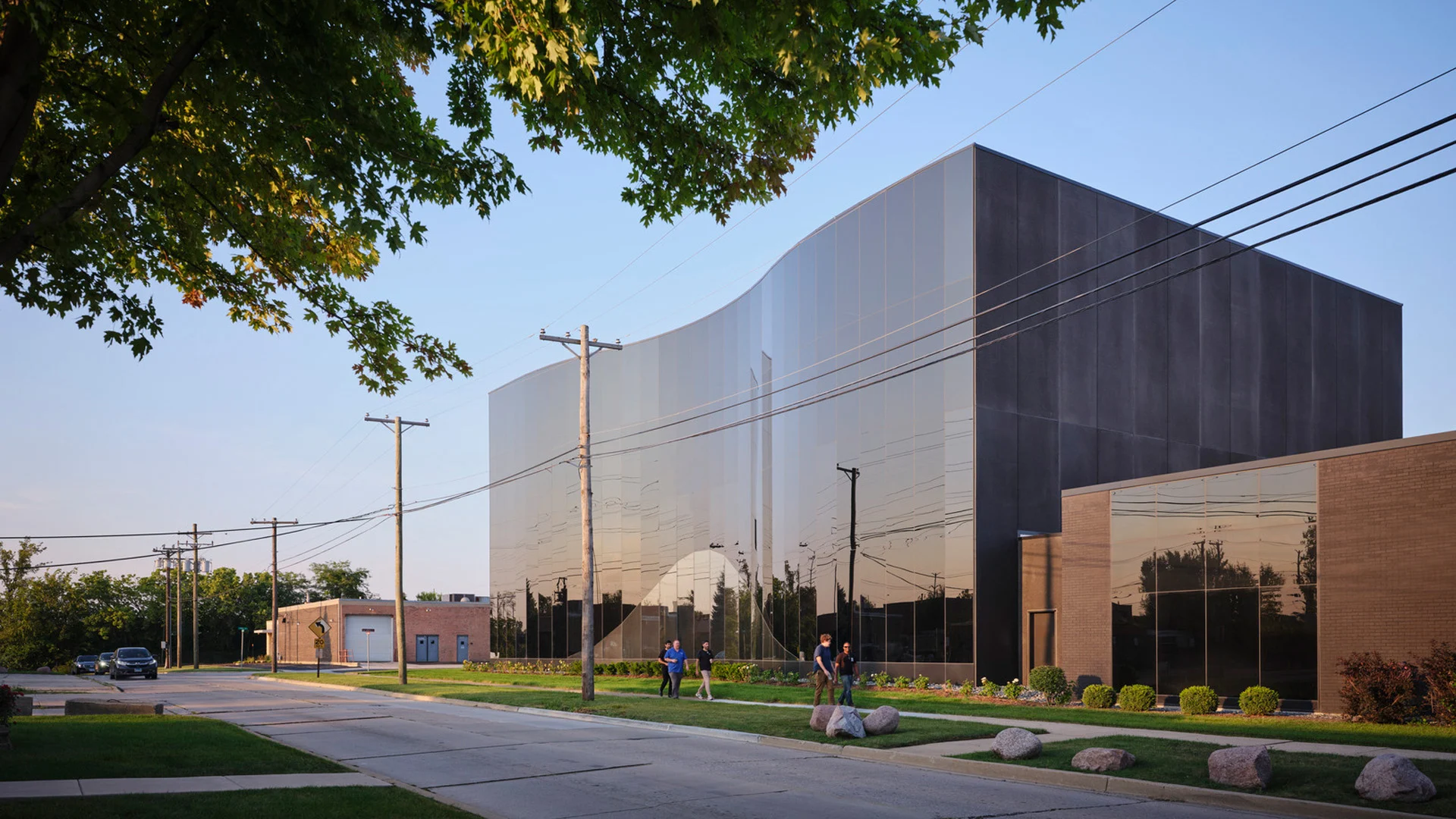
The building is a teaching tool for future IW 63 workers
The design that emerged is an elegant three-story building wrapped in curving dark glass on its front side, and highlighted with a bright red “IW 63” sign on its corner. Inside, it’s specially outfitted with structures and tools that are used on a daily basis by ironworkers when they’re erecting buildings and installing their facades. “They can build and then disassemble an entire three-story building within the space that they can then install curtain wall on,” says Scott Hurst, a principal at Gensler who led the project. “The building itself is an instrument. It’s a teaching tool.”
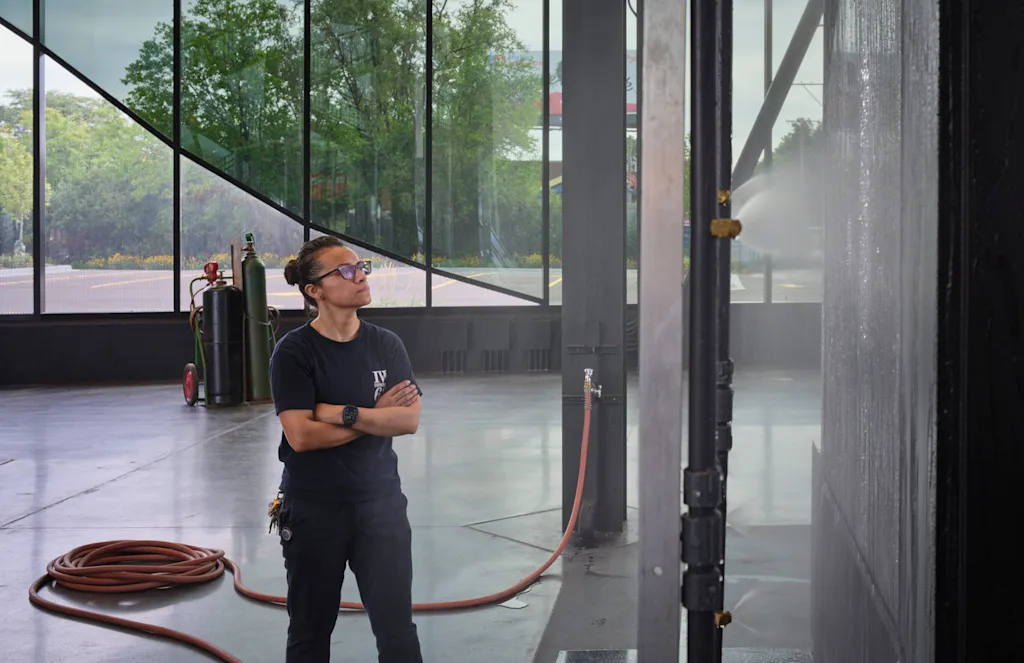
Hurst says the entire building was designed to offer educational opportunities. There’s a bridge crane at the top of the space that can move five-ton iron beams, and the structure that holds up that crane can also be used to practice rigging and panel installation. There’s a central spiral staircase (another ironworker installation task), revolving and sliding doors (ditto), operable skylights (ditto), and solar panels (ditto). “When you think of all of the things that you might find Local 63 performing out in the field, this building is really meant to embody those and demonstrate those in a kind of real way,” Hurst says.
The exterior is also a reflection of the trade’s abilities. The shape of the glass facade, with its slight concave curvature, was inspired by a weld bead, and is meant to evoke the elegant side of what ironworkers can do. In an architecturally rich city like Chicago, Local 63 has had more than its share of high-profile projects, from the skyscraper thrill experience Tilt on the 94th floor of the John Hancock building to the mirrored polish of the Bean. For Wende, it was important that the training facility had some of the same architectural panache. “We do all this cool, ornate stuff and no one ever really knew who we were,” he says. “Until now.”
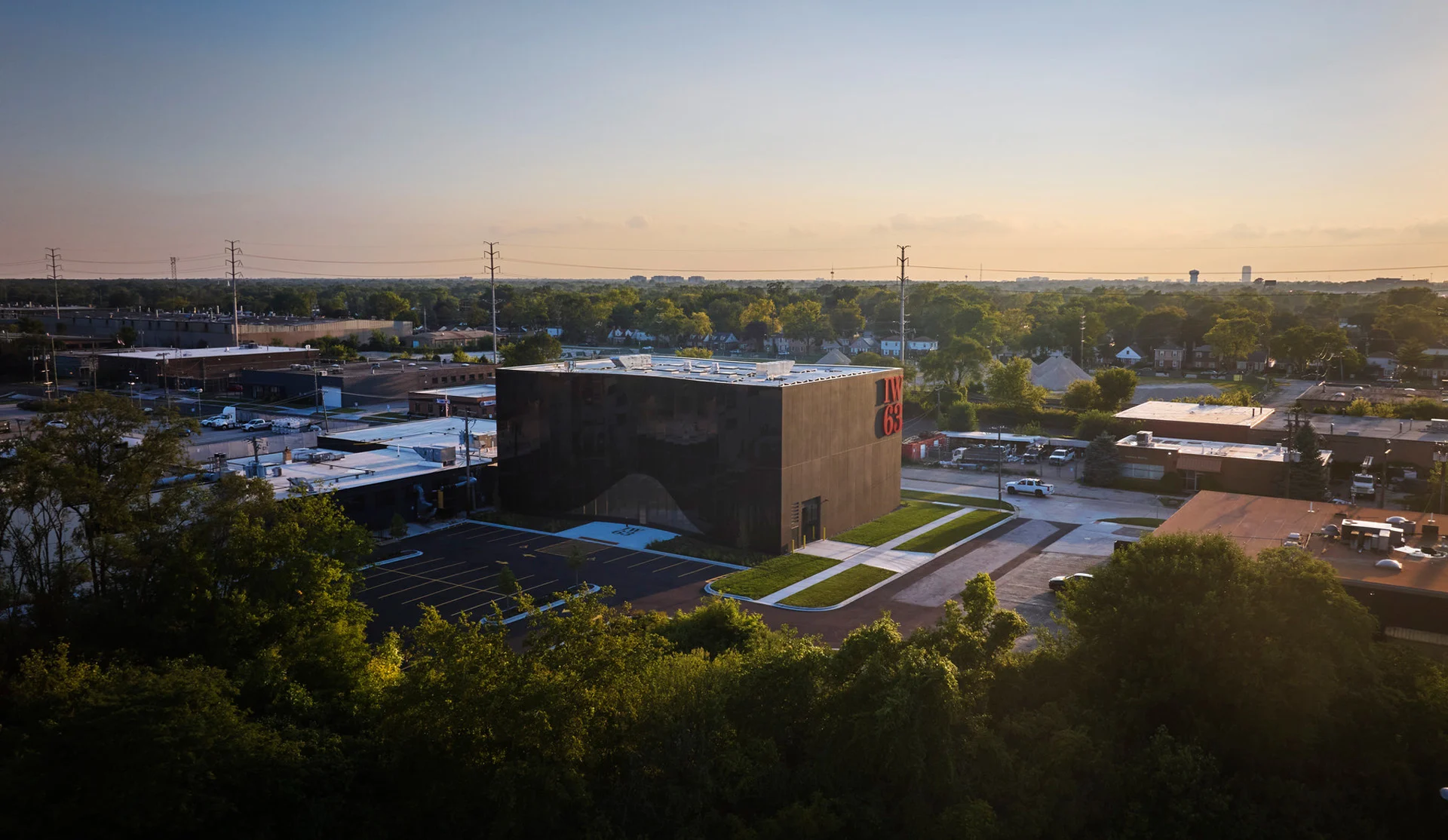
The Gensler-designed training center is also a marketing tool
The building has garnered its own kind of celebrity status, hosting local politicians, events, and training sessions for visiting ironworkers. Within the first week of the building’s opening it hosted an international ironworkers competition, where ironworkers were speed-climbing the columns inside the facility and rigging up cross beams.
It’s also part of the way the union aims to attract new talent. Wende says there’s been consistent interest in the union for years, but the new building only broadens the trade’s appeal. “It is a marketing tool beyond belief for what we do and who we are,” Wende says.
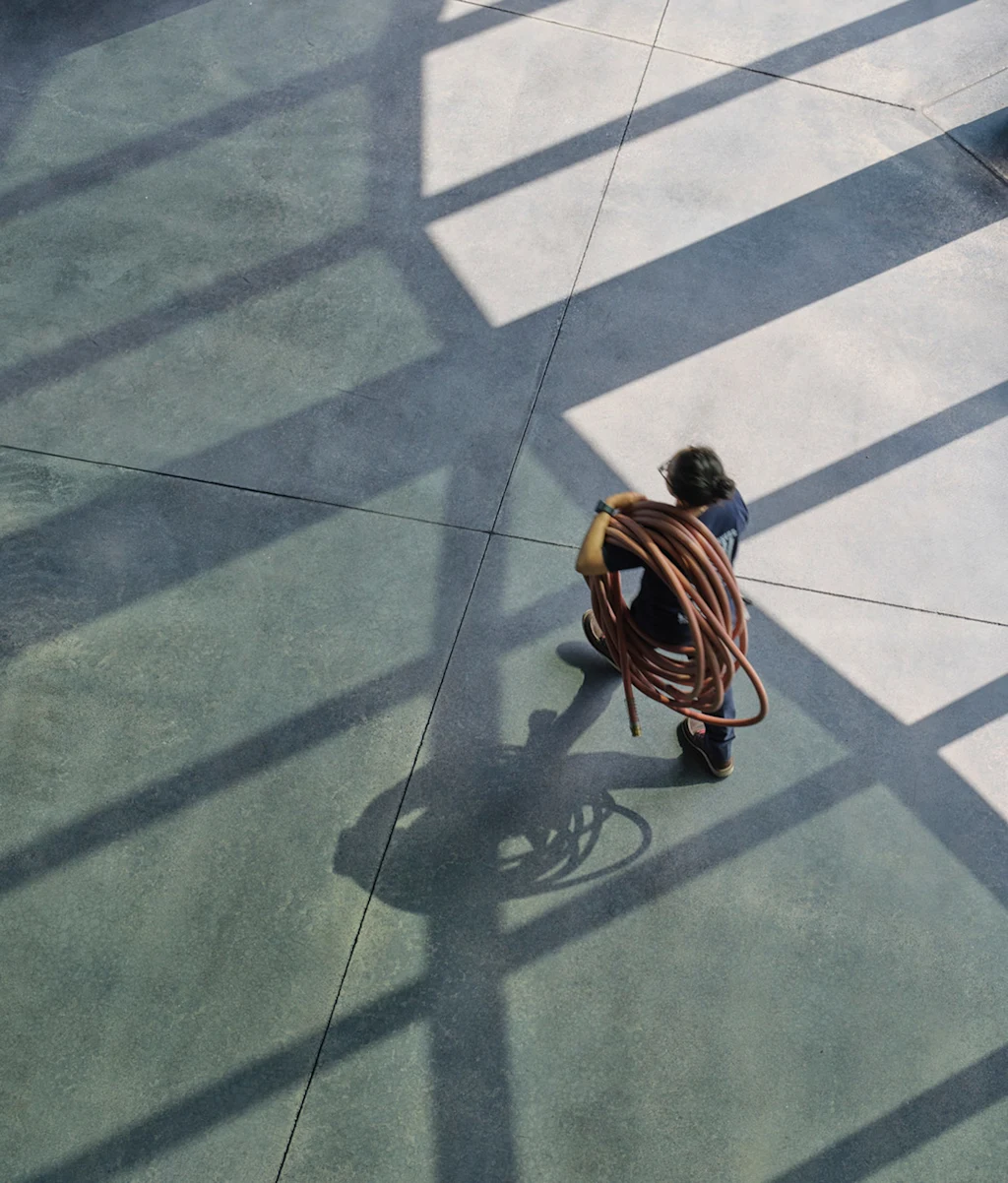
Making the building work for ironworkers and lure in the next generation became a major part of the design process. “As we think about Gen Z and their changing appetites towards what might be future-proof careers, recognizing that if we want people to take pride in the craftsmanship and the work that they do, they deserve facilities that fill them with that pride,” Hurst says.
Beyond the trade, the building is beneficial to the architecture and development community. While ironworkers use the facility to train, builders and designers can use it to test out new ways of making buildings. “All the questions that a contractor might have when it comes to how to construct something, or the ease of construction, or even cost concerns, can be alleviated by taking them through a facility like this,” Hurst says.
The facility had one extra benefit for the union itself. Local 63’s own union ironworkers helped build the project. Job security is literally built in.



